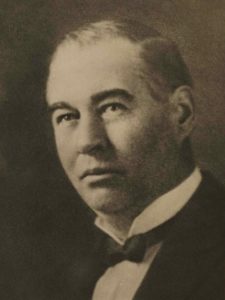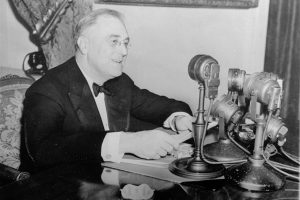History of Welfare
This page addresses the History of Social Federal Programs in the United States. The data on this page has been condensed into a video timeline for the sake of convenience.
Origins:
Before the twentieth century, the United States was affected by the English Poor Law Report of 1834 that asserted that poor relief, in general, was a bad thing. When reformers first started to advocate for federal welfare, they struggled against the belief that poverty is the result of laziness and that American prosperity is unquestionable. Years later, this antiwelfare viewpoint has survived in modern-day America and is now one of the obstacles preventing the implementation of a single-payer healthcare system. The first attempts to weaken this anti-welfare outlook took place during the depression of 1893-96. For instance, in 1894, the lowest point of the depression, Amos G. Warner published American Charities, which used statistics from the Charity Organization Society to conclude that poverty was mainly the result of “misfortune” rather than “misconduct”. Surprisingly, Henry Demerest Lloyd published a book that same year which compared the United States to a glorious feast that people needed help accessing. To clarify, Lloyd believed that the funds people need were there but that people just needed some aid accessing those funds. Another early welfare supporter was Jane Addams who published Democracy and Social Ethics in 1902 to encourage the development of a social ethic in the ‘modern’ industrial world. These ideas led to efforts to clear the way for people to access the ‘feast’. For instance, restraints were placed on “big business” as a means of reducing political corruption to clear the way for new entrepreneurs to start. Also, efforts were made to stop child labor and keep children in school to help them get the education they need to join the ‘feast’. However, progress was slow on providing direct aid, and attempts to go towards social security during 1920 failed (1).

A slow start in the early 1900s:

Welfare heats up:
In the following years, federal welfare slowly became a national priority. It started with President Herbert Hoover’s claims of supporting welfare despite the fact that he did not do enough during the Great Depression. Then welfare reached its peak with the election of President Franklin D Roosevelt (FDR), who introduced an array of well-known welfare agencies under the New Deal and increased the responsibilities of the government. For example, the Work Projects Administration (WPA) provided millions of jobs to unskilled Americans until the labor shortage caused by World War II. While the New Deal implemented various programs, it did not include Single-payer healthcare, as the political situation of the time shut down those efforts made by FDR. In other words, FDR was incapable of implementing whatever change he saw fit and he had to convince Congress to support every law he wanted to pass. Whenever FDR and Congress disagreed the political climate intensified. For instance, a series of reports from the National Resource Planning Board (NRPB) that FDR commissioned caused a great deal of anger from Congress and various big businesses. As a result, the NRPB was denied further appropriation and then ceased to exist. When President Lyndon Johnson took office, he attempted to continue the welfare trend by launching the “War on Poverty” in 1964 and 1965. In the 1960s various welfare programs initiated like Headstart, Job Corps, Supplemental Social Security, Cost of Living Adjustments, Earned Income Tax Credit, Medicare, and Medicaid. Overall, the Great Depression spurred a wave of federal welfare programs that helped relieve the suffering of Americans during that time period (1).

Welfare winds down:

When addressing the early 2000s, it is important to keep in mind that many of these events are current and changing. Thus far, welfare is slowly recovering as policymakers gradually become less negative of welfare. However, welfare is not off the hook yet as Professor Lane Kenworthy observes that “there is also considerable sentiment for the opposing view, which holds that social- welfare programs do not, in fact, reduce poverty”(2). To clarify, while policymakers became less reluctant concerning welfare, the anti-welfare attitudes of President Reagan and President Clinton are yet to disperse fully from people’s minds. After his inauguration, President Obama attempted to improve welfare by expanding medicare with the Affordable Care Act (ACA). Rather than raising the number of insured Americans and bringing down healthcare costs, the ACA fell apart quickly. To make matters worse, there are many reports that health insurers profited greatly from the ACA process. These reports are cover in detail on the ‘five issues’ page and the ‘Insurance Companies’ page of this website. After the ACA, healthcare has become an important electoral debate. During his campaign, President Donald Trump promised to address concerns over the plans enacted by the Affordable Care Act (4). Currently, electorate Bernie Sanders is pushing for an all-encompassing welfare program called Medicare-for-all. The system will rely on single-payer financing to pay the medical bills using tax money. Other politicians, like Elizabeth Warren, have shown interest in this concept and she put forward several progressive taxations plans to help finance welfare programs (3). Up to 2020, welfare started to gain positive attention from politicians and the public, but things were about to take a sudden turn.
Surprisingly, 2020 saw the rise of a pandemic, which has put welfare and insurance concerns at an all-time high. Could the pandemic act as a catalyst for change the same way the Great Depression did? No one can tell at this point, however, the frustration with the government’s response to this pandemic is real. A peer-reviewed article published in BMJ claims that “doctors complained that they did not have test kits and were short of protective equipment. Other physicians said that access to Medicaid, insurance for poor patients, should be improved and sped up”(5). One thing is certain, this pandemic will test the limits of the current insurance system and the flaws will become more obvious than ever. In essence, the pandemic will bring out the flaws in the current health insurance system which might accelerate welfare efforts.
Footnotes:
1. Levine, Daniel. “Cheering for a Team No Longer on the Field: Rhetoric and Reality in American Welfare History.” Journal of Economic Issues, vol. 35, no. 3, 2001, pp. 733–742., doi:10.1080/00213624.2001.11506398.
2. Kenworthy, Lane. “Do Social-Welfare Policies Reduce Poverty? A Cross-National Assessment.” Social Forces 77, no. 3 (03, 1999): 1119-1139. doi:http://dx.doi.org.library2.ramapo.edu:2048/10.1093/sf/77.3.1119. http://library.ramapo.edu:2048/login?url=https://search-proquest-com.library2.ramapo.edu:2443/docview/229869381?accountid=13420.
3. Sarlin, Benjy. “Why ‘Medicare for All’ Wrecked Elizabeth Warren but Not Bernie Sanders.” NBCNews.com. NBCUniversal News Group, March 5, 2020. https://www.nbcnews.com/politics/2020-election/why-medicare-all-wrecked-elizabeth-warren-not-bernie-sanders-n1150691.
4. “The Online Journal of Issues in Nursing.” OJIN. Accessed May 17, 2020. https://ojin.nursingworld.org/MainMenuCategories/ANAMarketplace/ANAPeriodicals/OJIN.
5. Tanne, Janice Hopkins, Erika Hayasaki, Mark Zastrow, Priyanka Pulla, Paul Smith, and Acer Garcia Rada. “Covid-19: How Doctors and Healthcare Systems Are Tackling Coronavirus Worldwide.” Bmj, 2020, m1090. https://doi.org/10.1136/bmj.m1090.
